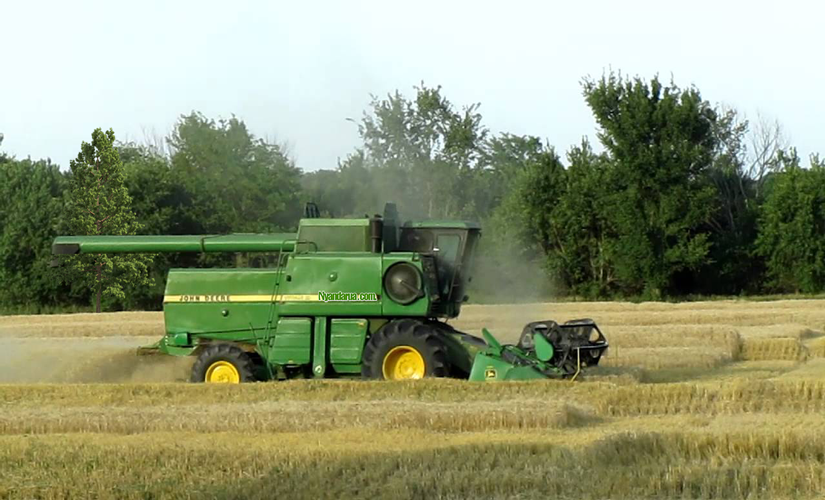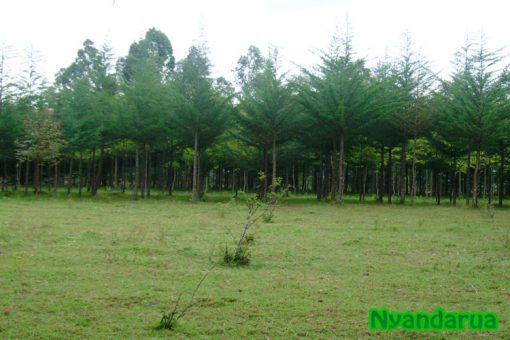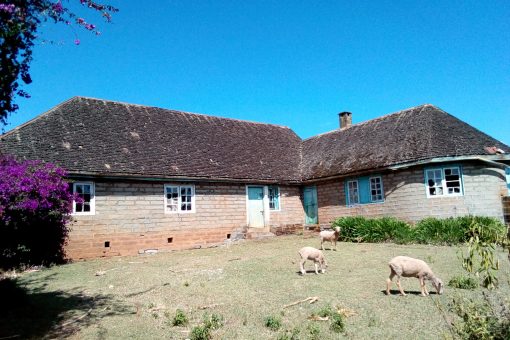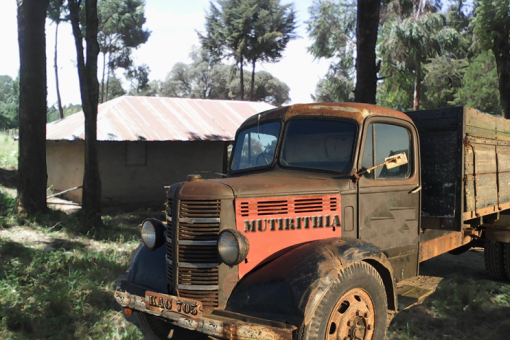The Kigethi did its job of gathering the wheat straws, sending them into an extractor that separated wheat kernels from their hull and sent the freshly extracted grain through a shoot. The shoot opened into a compartment on the side of the Kigethi, a space that resembled a balcony of a house. That compartment was the working area where freshly extracted wheat was received, bagged and hemmed by a team of five people. Two people stood on opposite sides of the grain shoot, holding open the mouth of the 100Kg gunny bag under the shoot so the wheat poured directly into the bag until it was full.
A third person stood waiting to pull away the filled bag from under the shoot, while the two people manning the grain shoot quickly replaced another empty bag to catch the stream of wheat spewing out of the shoot. They had to make that switch seamlessly to avoid spilling any wheat. The third person held up the full bag of wheat in its upright position as a forth person hemmed up the bag using the giant 5 inch “needle”. The needles were threaded with sisal twine.
A fifth person kept the needles threaded with the sisal twine and it was also his job to cut the twine once a bag was hemmed. The hemmed bag was then dropped on its side and pushed out onto the ground. By that time, another bag was already filling up and the hemming started all over again and again, and again all day long. It was like a production line where one task led to the next with everybody keeping up the pace with the rest.
The boys and the team did all these functions with the Kigethi rocking from side to side as it navigated its way across the wheat fields where the terrain was uneven. They steadied themselves against the rails of the compartment, legs spread apart for stability and they kept working like worker bees all day long, until the job was done.




